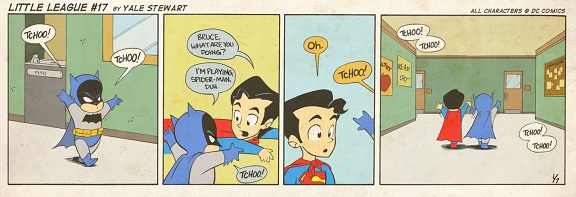You know how sometimes you notice something interesting but can’t really talk about it because you don’t have the right words for it? From an Canadian course about disability in the media:
The second disability stereotype that will be explored is “disability as hero by hype”. This stereotype is more commonly referred to as “the super crip” pereception. When not pitied, persons with disabilities are sometimes seen as “heroes,” or in other words, outrageously admired for their “courage” and determination. This stems from the belief that life with a disability must necessarily be horrific and unsatisfying, and as such, we must admire persons with disabilities for being able to live “the way they do.” Much like portraying disability as a form of lesser self-worth (as is often the case with the “disability as pity” stereotype), placing persons with disabilities on a pedestal is another way to denote this social group as “other”. This particular stereotype is also linked to the idea that disability in one area is complimented with superior abilities in another area (for example, the misconception that people who are blind have superior hearing)
“Super crip” is a good term for an phenomenon that has long irritated me, the way in which certain disabled or chronically ill people are periodically held up by the media as heroes for “overcoming” their disabilities. It’s always some nice middle class boy who got paralysed in a car accident but doesn’t let that stop him from fullfilling his dream of going white water rafting in the Amazon or mountain biking off Everest or whatever, who always take pains to distinguish themselves from all those other disabled people by showing how little they let their disabilities dictate their lives.
To be fair, it’s not so much those people themselves, though they can be annoying, as the narrative in which they are placed, which is threefold. On the one hand, it’s all about how, if only you believe hard enough, you can overcome any adversity and still be what you want to be, as a moral example for all us ablebodied people struggling with our petty problems. On the other hand, these are also stories about assuaging our own fears about becoming disabled and worthless, by showing disability as just another obstacle to overcome, rather than something that shapes your day to day life. Finally, on the gripping hand, it others all those disabled or chronically ill people who can’t or won’t fit the super crip profile, who just live ordinary lifes of quiet desperation like the rest of us. If you’re not hang gliding off the Niagara Falls you’re just not trying.
The super crip than is the other side of the coin of the stereoype of disability as pity, the idea that if you’re disabled or chronically ill your life is basically worthless and you’re very brave if you haven’t killed yourself yet — “in your place i’d killed myself! — cheers. Sandra, who of course had been chronically ill in one way or another, hated that. She was very firm in insisting that she wasn’t a hero, she was just an ordinary person dealing with life just like everybody else, even if she had to be more aware of her limitations than a temporarily able person need be.
The super crib stereotype is a stick to cudgel both temporarily able and disabled people for not being good enough to be as wonderful as them, yet another tool to keep the status quo. Clearly if Oscar Pistorius can compete in the regular Olympics on prostathic legs, surely you in your wheelchair are able to make your way through everyday life without our help and we don’t need to worry about ways to make society as a whole more accessible, physically and mentally, for people with disabilities. Similarly, why are you, a perfectly healthy worrying about your trivial problems when heroes like Pistorius can make history? Surely there’s no need to do anything for you, when he can pull himself up by his bootstraps and he doesn’t even have feet!
(Nothing against Oscar Pistorius, who seems a perfectly decent chap and who I hope will do well in his races.)
